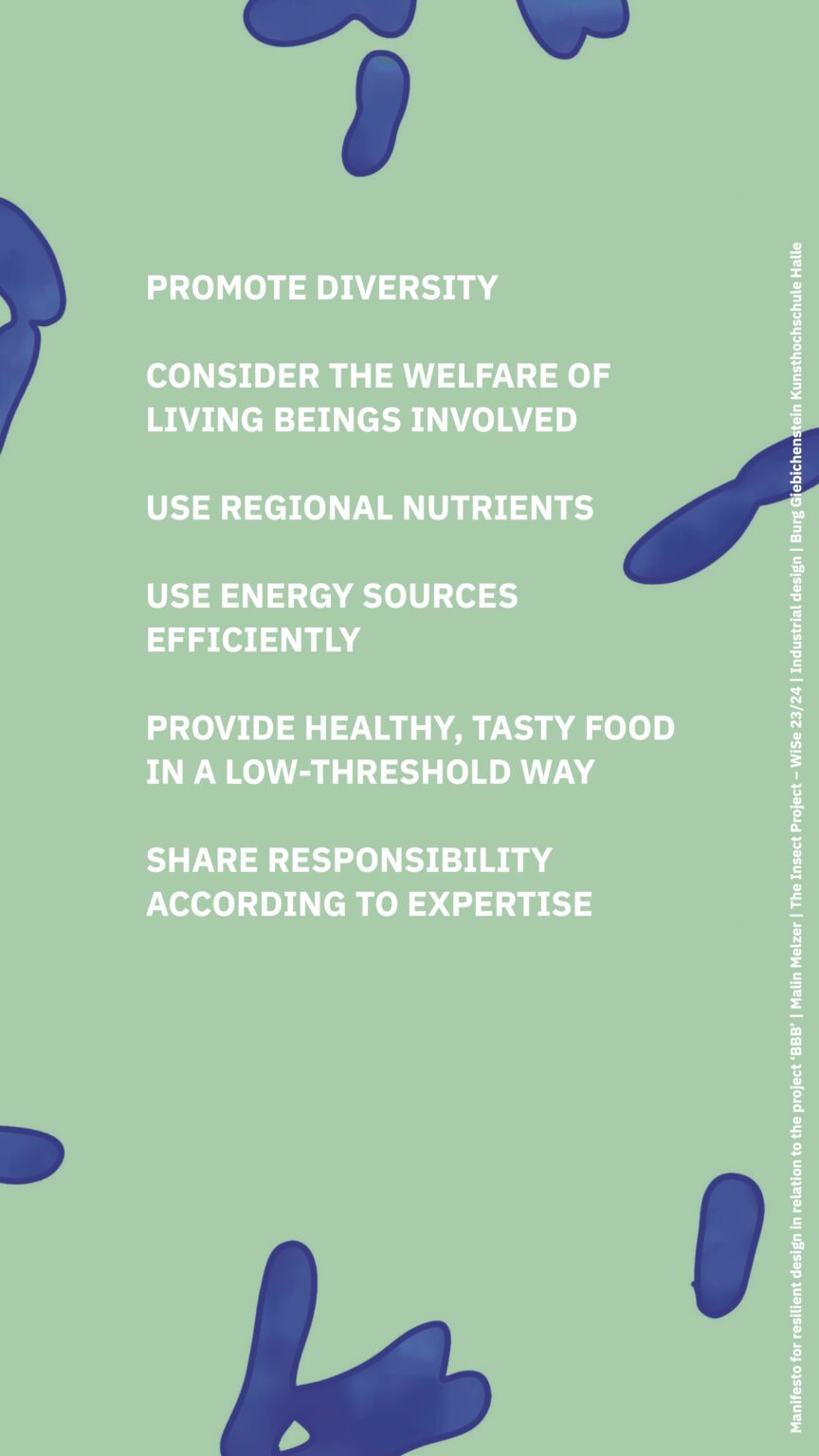Bienenbakterienbeute (Bee bacteria hive)
a dwelling for bees that enables fermentation with bee bacteria
The bee bacteria hive provides a more resilient approach to the health of bees and humans and offers a basis for a diverse range of plant-based alternatives to dairy products. The focus is on bee bacteria living in bee bread, which is removed from the honeycombs and used as starter cultures for food fermentations. Fermentation takes place in the beehive at 35 °C. The bee bacteria are particularly suitable for plant-based foods, can make them easier to digest and enrich them with nutrients and flavours, which vary depending on the bee colony, region and season. A beekeepers’ association has the bee bacteria hives produced regionally and lends them out to cafés, restaurants, educational institutions or private individuals, for example. This also makes beekeepers more resilient.
| student: | Malin Melzer |
| project: | The Insect Project – Resilience Part I |
| year: | 2023/24 |
What do insects have to do with yoghurt? Fermentation has been an important method of preserving food in various cultures since thousands of years ago. The beginnings of milk preservation such as yoghurt can be traced back to the domestication of animals in the Middle East around 10,000 years ago. The use of starter cultures played a decisive role in this. In the region of Bulgaria/Turkey for example, nettle roots or ants were used as carriers of starter cultures in preindustrial times.
In the colonies of social insects such as bees and ants, a variety of microorganisms are found in the digestive tract. These microorganisms have adapted over time to convert lactose into acid in dairy products, resulting in a probiotic quality and variation in flavours. In industrial food fermentations, the use of microorganisms has been standardised and greatly reduced in order to produce controllable, equal products. Thus today, these can be described as microbial monocultures.
Plant-based alternatives such as soya yoghurt are fermented with the same starter cultures that are used for cow’s milk yoghurt. However, it would make more sense to use microorganisms that specialise in the conversion of plant-based carbohydrates. This would allow a greater variety of flavours, nutrients and probiotic cultures to be produced with plant-based products. In addition, components that are difficult to digest can be broken down. Plant-based yoghurts, certain plant-based cheeses, fruit and sourdough, among other things, could be fermented.
Such fructose-focussed microorganisms are found in social insects due to their diet. Honey bees are particularly interesting here, not only because of their microbial composition, but also because they are kept almost everywhere in the world and thus an infrastructure already exists. Bee bread (pollen fermented by bees) can be used as a carrier of their microorganisms as starter cultures.
In order to have a positive effect on the health of bees, on which we are largely dependent, on a small scale we can rethink the form of housing and the selection and quantity of harvested bee products.
For fermentation, it makes sense to utilise the constant heat of 35 °C in the beehive. The construction should keep the heat well inside the hive, which also benefits the bees. In addition, focussing on fermentation takes the honey harvest further into the background. A reduced honey harvest means that honey is available to the bees as food all year round, which supports their immune system. In addition, bees are thus increasingly concerned with the elimination of parasites.
The BBB combines health of bees and humans. The construction is cylindrical, holds 55 litres (the optimum is between 30-60 litres) and allows honeycombs with bee bread to be removed from two sides. The bee bread, together with the desired food can be placed in fermentation jars and put directly between the honeycombs. The honeycomb construction is not orientated to frames, but is built freely by the bees around the fermentation insert, which can positively influence the thermodynamics. Small-scale honey harvesting is still possible as the upper part is removable and separated from the lower part by a grid which the queen cannot pass through.
Beekeepers’ associations lend the hives to small cafés, restaurants, educational institutions or individuals, for example. This gives them an additional source of income that makes them more resilient. The responsibility for the hives lies with the beekeepers. The users benefit from the resulting food fermentations, which they can enjoy themselves or sell.

